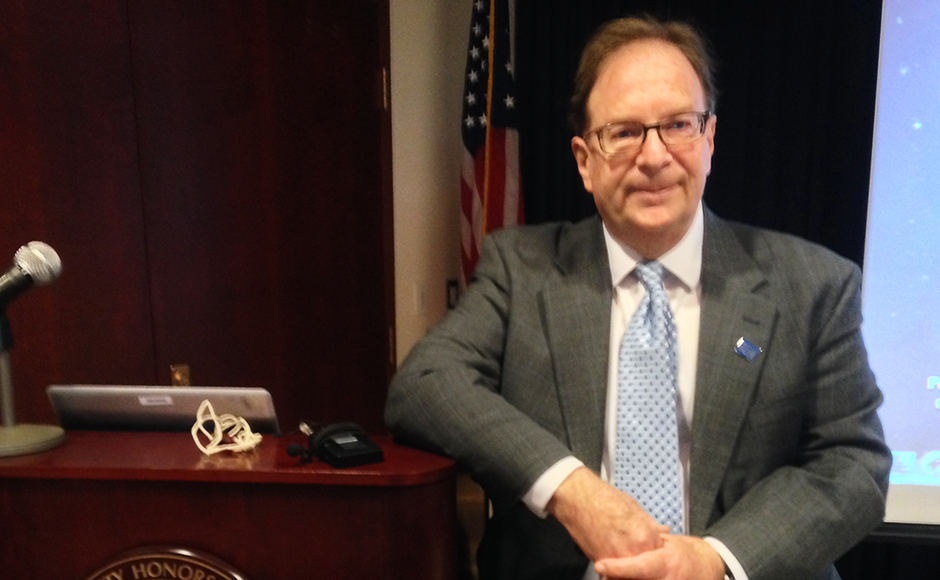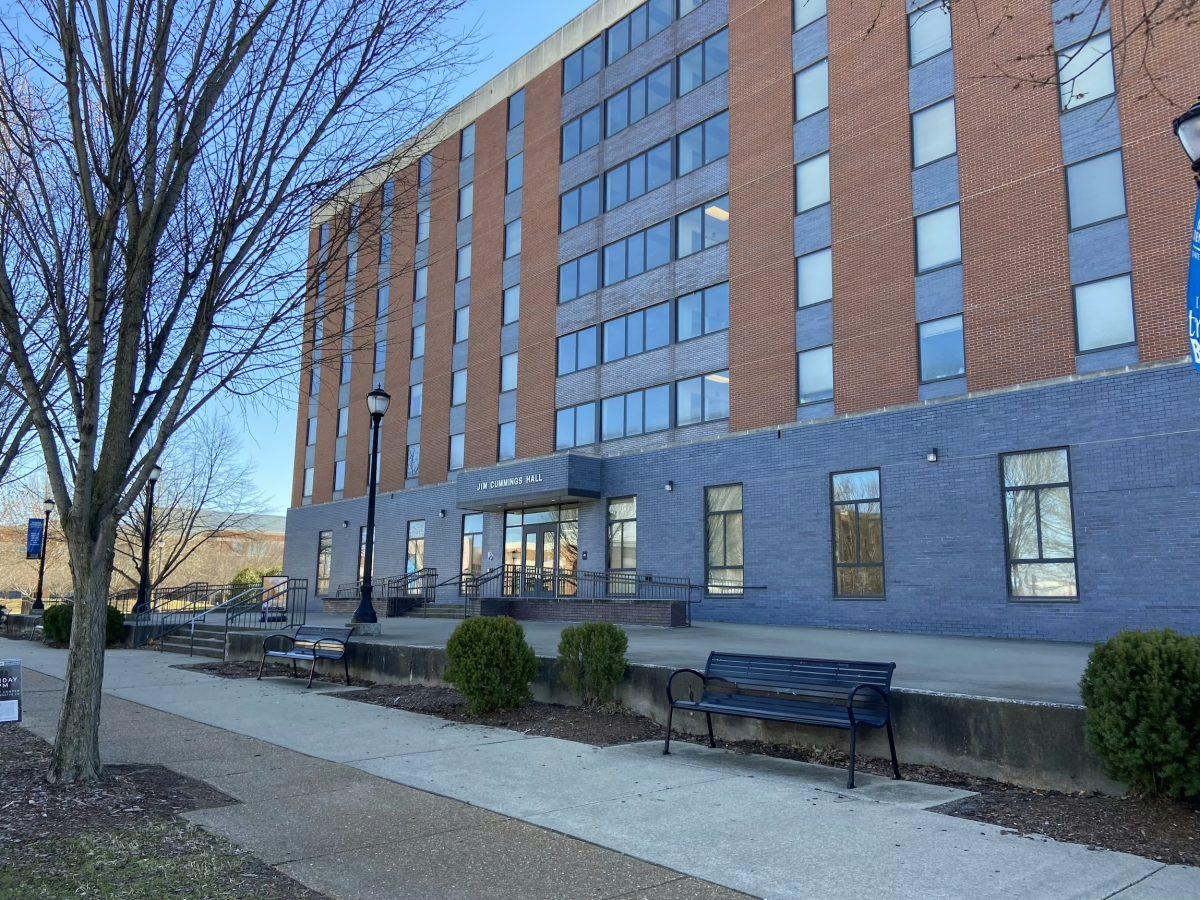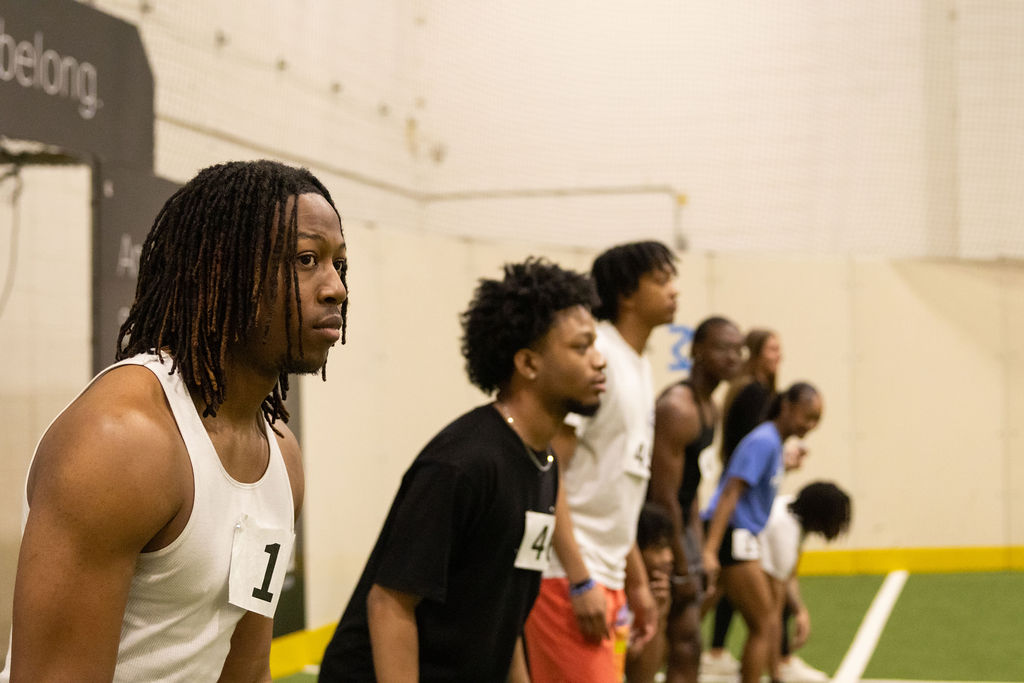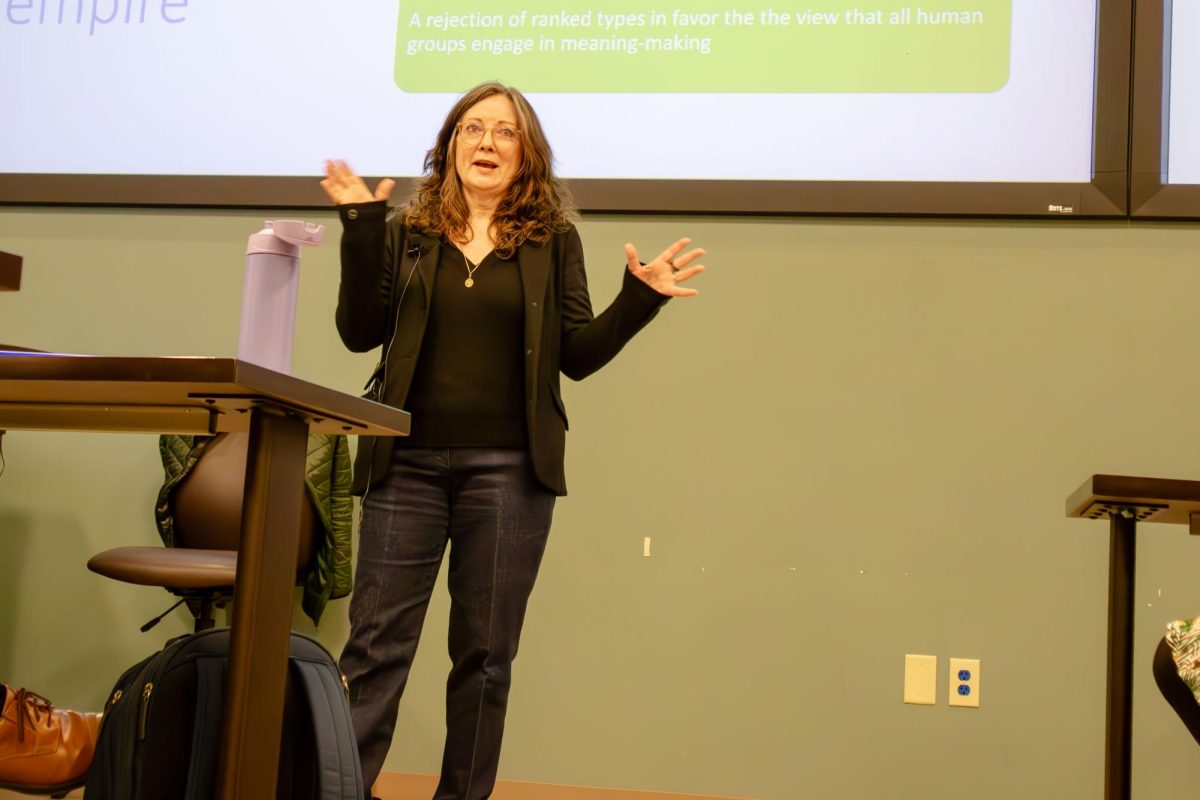University Provost Dr. Brad Bartel discussed transformation and social evolution in Fort Lewis: Military Post, Native American Boarding School, and Liberal Arts College, a presentation for the spring semester’s Honors College lecture series.
Bartel has an extensive background in anthropology and archaeology, with research published in several scholarly journals.
Colorado’s Fort Lewis, a military base that was converted into an “Indian School” in 1891, was Bartel’s focal point in a wider discussion about turn-of-the-century attempts by the American government to acculturate, or “civilize,” Native Americans.
Transformations to the numerous Fort Lewis facilities tell a story that affected most if not all of the Native Americans occupying land in Colorado, including the Apache, Cheyenne and Pueblo tribes, and eventually spread to Native Americans nationwide.
Starting in 1634, the Society of Jesus dedicated themselves to “civilizing” natives in North America. Both Harvard and Dartmouth’s Charter includes language referring to the acculturation of Native Americans. “English and Indian Youth” in Harvard’s and “for the education and instruction of youth of the Indian tribes” within Dartmouth’s charter supports an agenda to educate but moreover to keep eyes focused on cultural heritage closed. Nathan Meeker, an agriculturalist and homesteader, sought to do the same by urging the nomadic Ute tribe to farm. Meeker ordered the Ute to plow a horse race track owned by the Colorado tribe. Seen as an act of disrespect, the Ute people revolted, initiating what would become known as the Meeker Massacre.
The 1819 Civilization Fund Act furthered processes dedicated to teaching Western values to Native Americans and the creation of boarding schools. By the end of the 19th century, 15 states had established such institutions, some with three different locations. Unfortunately, boarding schools enrollment didn’t fall until well into the 1960’s. Fort Lewis, once a military post, was one of the uniquely restrictive outlets Native Americans had free access to during this time of gradual “civilization.”
In the 1880’s, Fort Lewis moved from Animus City to Hesperus, outside of Durango, in order to protect a rich silver mine from nearby tribes. The final move from Hesperus directly into the town of Durango, transformed the once A&M College to a 4-year public institution with students in over 125 federally recognized tribes.
The facility became a high school between 1911-1927, with an average attendance of 50 boys. It changed again to an automotive and mechanical school between 1927-1956, controlled by the State Board of Agriculture, with still a low but increasing attendance at 266 enrollments. It’s final transformation in 1956, turned it into the designated public liberal arts college titled Fort Lewis College and exists as such today. History such as this reminds us that institutions must change to benefit and meet the needs of the populous, rather than restrict the unfamiliar.
James “Bo” Taylor will present Cherokee History, Language, and Culture from a Native Perspective next Monday, Apr. 6 for another installment of the Spring 2015 Honors Lecture Series.
For more honors college events, follow us at www.mtsusidelines.com, on Facebook at MTSU Sidelines and on Twitter at @Sidelines_News
To contact news editor Max Smith, email newseditor@mtsusidelines.com








